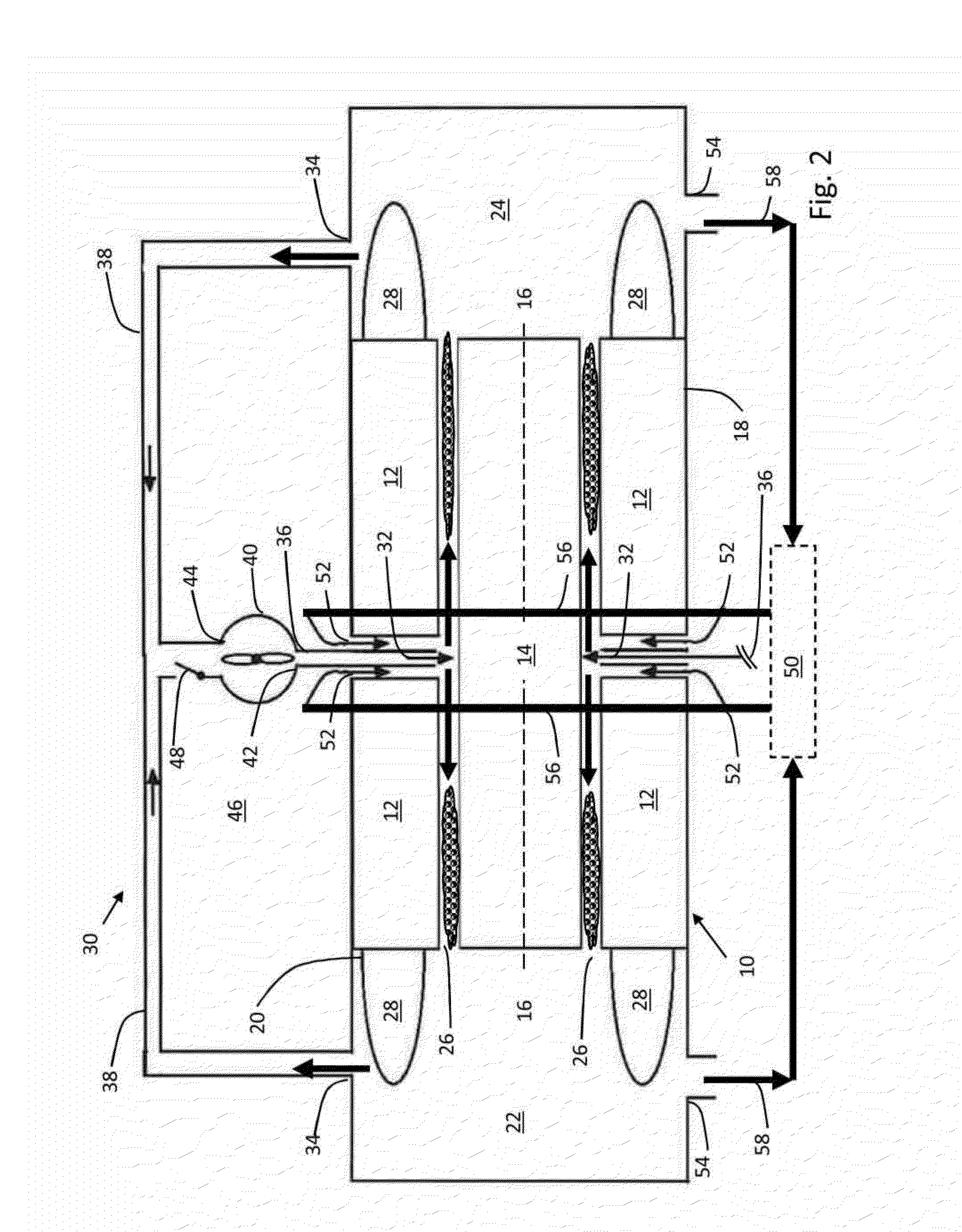Two Phase Gap Cooling of an Electrical Machine
a technology of electrical machines and gap cooling, which is applied in the direction of cooling/ventilation arrangements, electrical apparatus, dynamo-electric machines, etc., can solve the problems of excessive heat transfer, excessive heat loss, and ineffective cooling, so as to reduce friction and windage loss, reduce heat loss, and reduce heat loss
- Summary
- Abstract
- Description
- Claims
- Application Information
AI Technical Summary
Benefits of technology
Problems solved by technology
Method used
Image
Examples
Embodiment Construction
[0008]Although the embodiments described below are in the context of an electrical motor, the principles disclosed herein may be used with any electro-dynamic machine, such as a generator or other rotating electrical machine, and not intended to be limiting in any sense. Also, although the term “oil” is used in the description, the use is not intended to limit the embodiments in any sense, and any suitable liquid coolants may be used instead of oil, including by way of example, oil based coolants, water based coolants, synthetic fluids, etc. Also, although the term “gas” is used in the description, the use is not intended to limit the embodiments in any sense, and any suitable gas may be used, including air. Also, the terms “top”, “bottom”, “left,” and right” are used in the description that follows for ease of describing features illustrated in the drawings, and their use is not intended to limit any of the embodiments so described.
[0009]The motor 10 comprises a stator 12 and a rot...
PUM
 Login to View More
Login to View More Abstract
Description
Claims
Application Information
 Login to View More
Login to View More - R&D
- Intellectual Property
- Life Sciences
- Materials
- Tech Scout
- Unparalleled Data Quality
- Higher Quality Content
- 60% Fewer Hallucinations
Browse by: Latest US Patents, China's latest patents, Technical Efficacy Thesaurus, Application Domain, Technology Topic, Popular Technical Reports.
© 2025 PatSnap. All rights reserved.Legal|Privacy policy|Modern Slavery Act Transparency Statement|Sitemap|About US| Contact US: help@patsnap.com



